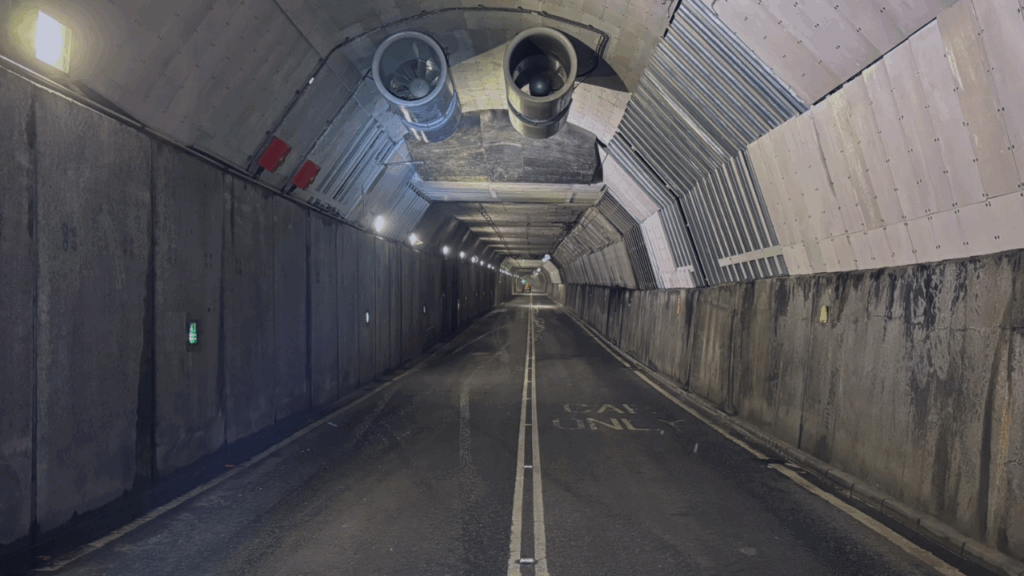7 things you didn’t know about our Ventilation System in the tunnel.

When you travel through the Tyne Tunnels, it’s easy to miss a lot of our complex systems working behind the scenes to keep you safe. Our ventilation system plays a crucial role, not just in keeping the air fresh, but also in ensuring safety during emergencies. Here are seven fascinating facts about how our tunnel ventilation system works:
- There are sensors throughout both tunnels which monitor both visibility and levels of dangerous gases emitted from vehicles (Carbon Monoxide, Nitrogen Oxide, Nitrogen Dioxide). If visibility becomes too low, or the levels of these gases get too high, roof mounted jet fans will run to ensure a safe breathable environment for staff and customers.
- The Piston Effect refers to the forced air flow inside a tunnel caused by moving vehicles. In a bi-directional layout, the jet fans will push the air towards the chimneys, so the air becomes stale in the middle of the tunnel.
- The 42 jet fans (22 Northbound, 20 Southbound) throughout the tunnels are capable of ventilating a 100MW fire, which is equivalent to a fully laden HGV fire. In the event of a fire, these fans will move smoke away from the traffic behind the incident and allow for a safe evacuation for tunnel users.
- Jet fans can be controlled manually from the control room or automatically by SCADA and can be run in forward or in reverse.
- When an escape gallery door is opened the ventilated gallery will become pressurised, thanks to pressurisation fans. This will create a positive pressure within the gallery and stop any smoke or fumes entering it, creating a constant clean air environment for evacuees. Louvres on either side of the gallery will close to maintain a positive pressure.
- At the exit of each tunnel, there is a service building with a large chimney. There are more fans inside these buildings called pollution fans which drag polluted air from the tunnels and expel them from the chimney, further ensuring that the air within the tunnel is safe for its users.
- Both tunnels have a sump which collects any run off through the tunnel drainage gullies. There is also ventilation fans within these sumps as they could be susceptible to build up of flammable gases. If these fans are unable to suitably reduce the build-up, a fire foam system is activated which will smother the area and prevent a fire.